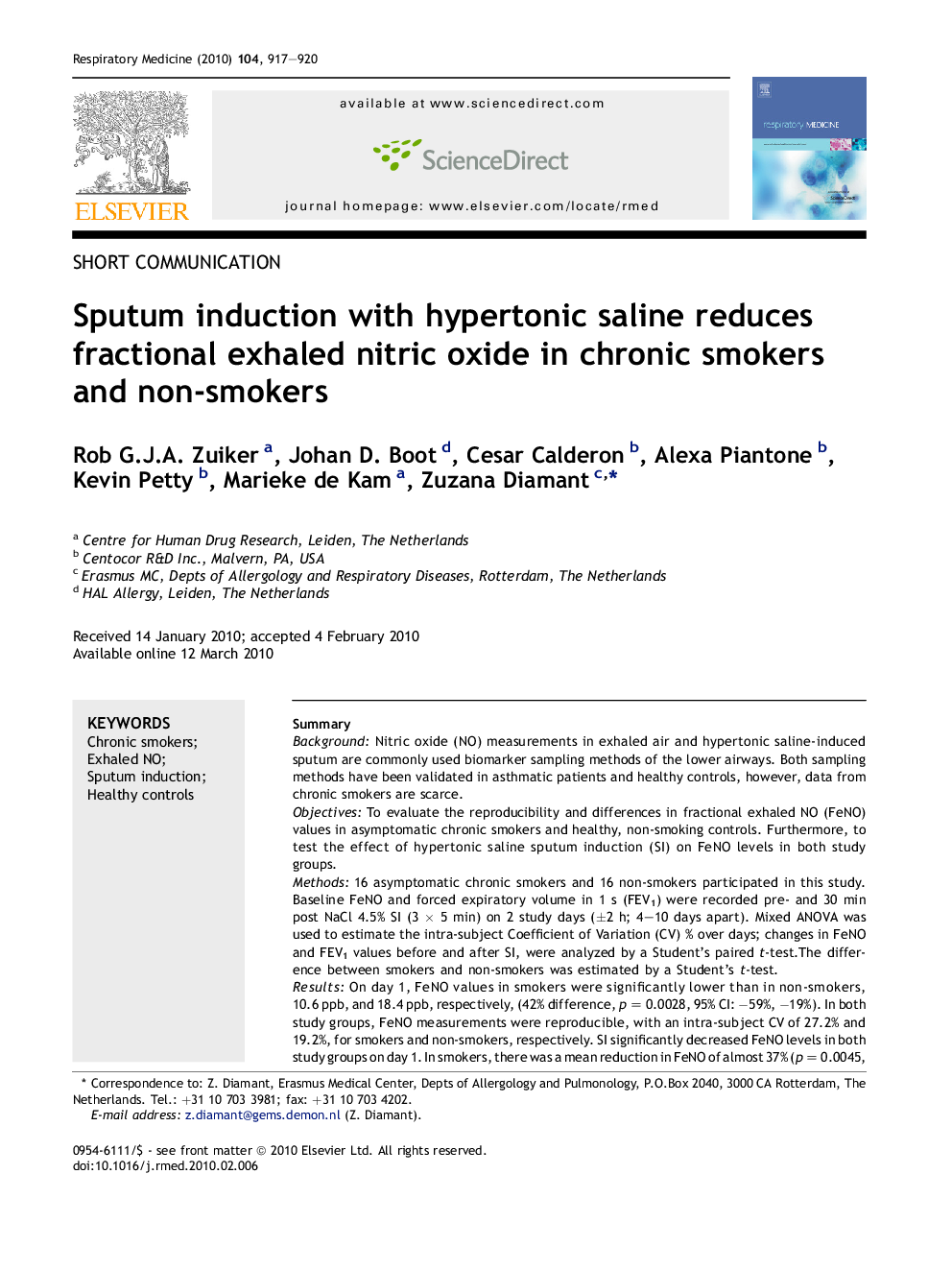| کد مقاله | کد نشریه | سال انتشار | مقاله انگلیسی | نسخه تمام متن |
|---|---|---|---|---|
| 4210572 | 1280597 | 2010 | 4 صفحه PDF | دانلود رایگان |

SummaryBackgroundNitric oxide (NO) measurements in exhaled air and hypertonic saline-induced sputum are commonly used biomarker sampling methods of the lower airways. Both sampling methods have been validated in asthmatic patients and healthy controls, however, data from chronic smokers are scarce.ObjectivesTo evaluate the reproducibility and differences in fractional exhaled NO (FeNO) values in asymptomatic chronic smokers and healthy, non-smoking controls. Furthermore, to test the effect of hypertonic saline sputum induction (SI) on FeNO levels in both study groups.Methods16 asymptomatic chronic smokers and 16 non-smokers participated in this study. Baseline FeNO and forced expiratory volume in 1 s (FEV1) were recorded pre- and 30 min post NaCl 4.5% SI (3 × 5 min) on 2 study days (±2 h; 4–10 days apart). Mixed ANOVA was used to estimate the intra-subject Coefficient of Variation (CV) % over days; changes in FeNO and FEV1 values before and after SI, were analyzed by a Student's paired t-test.The difference between smokers and non-smokers was estimated by a Student's t-test.ResultsOn day 1, FeNO values in smokers were significantly lower than in non-smokers, 10.6 ppb, and 18.4 ppb, respectively, (42% difference, p = 0.0028, 95% CI: −59%, −19%). In both study groups, FeNO measurements were reproducible, with an intra-subject CV of 27.2% and 19.2%, for smokers and non-smokers, respectively. SI significantly decreased FeNO levels in both study groups on day 1. In smokers, there was a mean reduction in FeNO of almost 37% (p = 0.0045, 95% CI: −53%, −14%), and in non-smokers a mean decrease of almost 37% (95% CI : −53%, −14%; p = 0.0045). In both study groups SI did not affect FEV1 (p > 0.94).ConclusionsOur data extend previous findings in asthmatics and healthy controls to asymptomatic chronic smokers: 1. FeNO measurements are reproducible in both smokers and non-smokers; 2. baseline FeNO levels in chronic smokers are lower than in non-smokers and 3. sputum induction by hypertonic saline reduces FeNO levels in both study groups, without affecting lung function.
Journal: Respiratory Medicine - Volume 104, Issue 6, June 2010, Pages 917–920